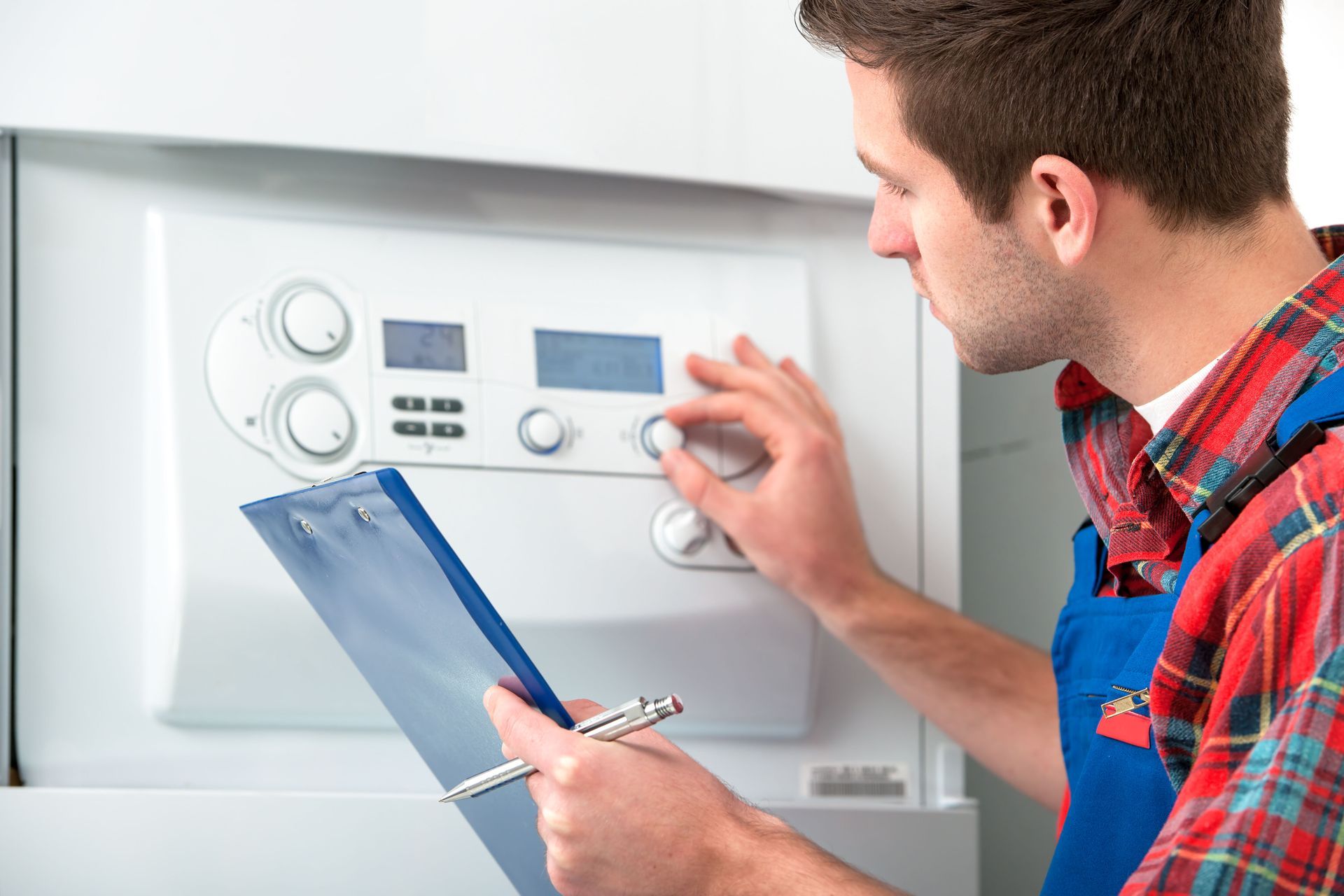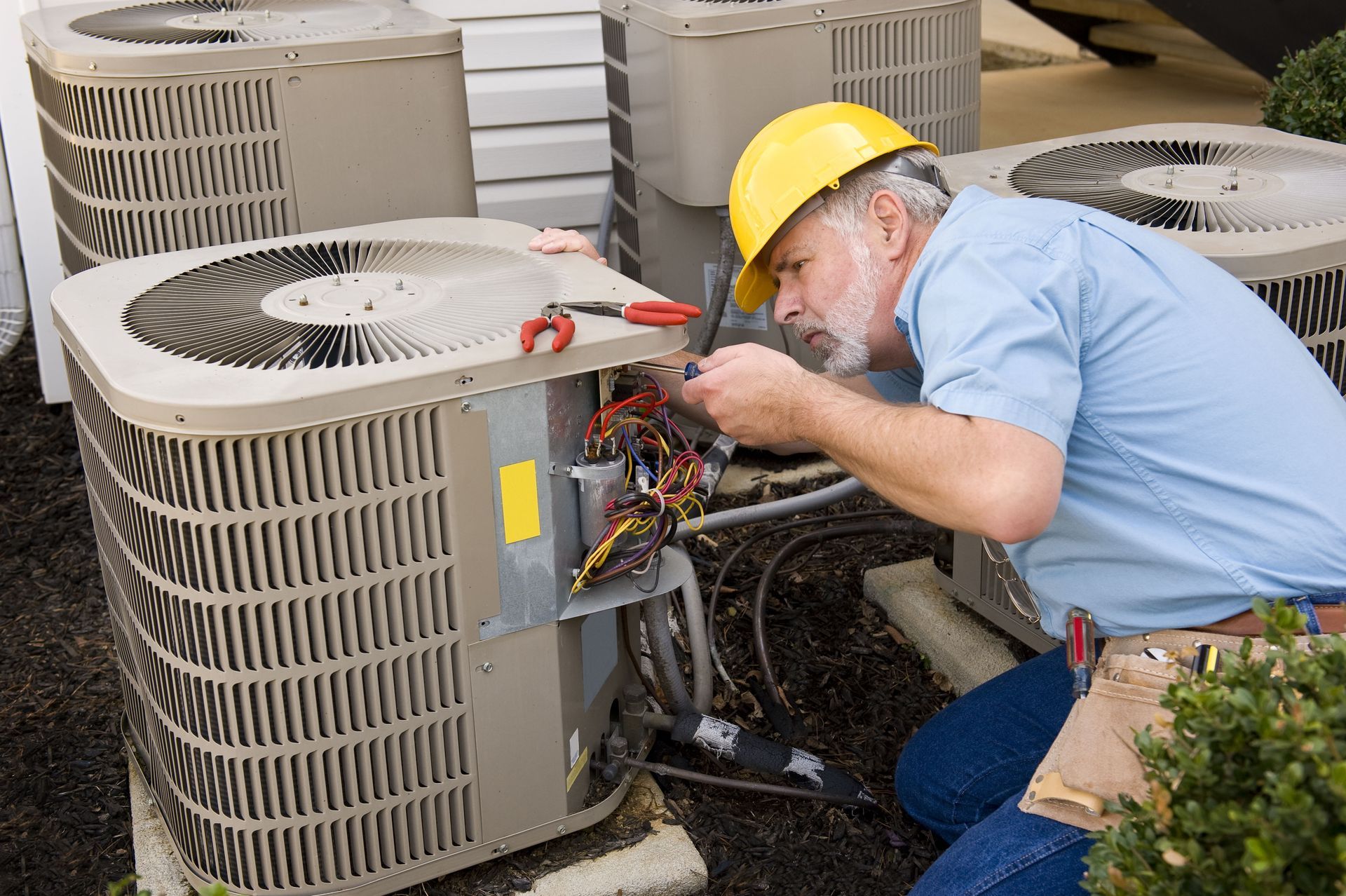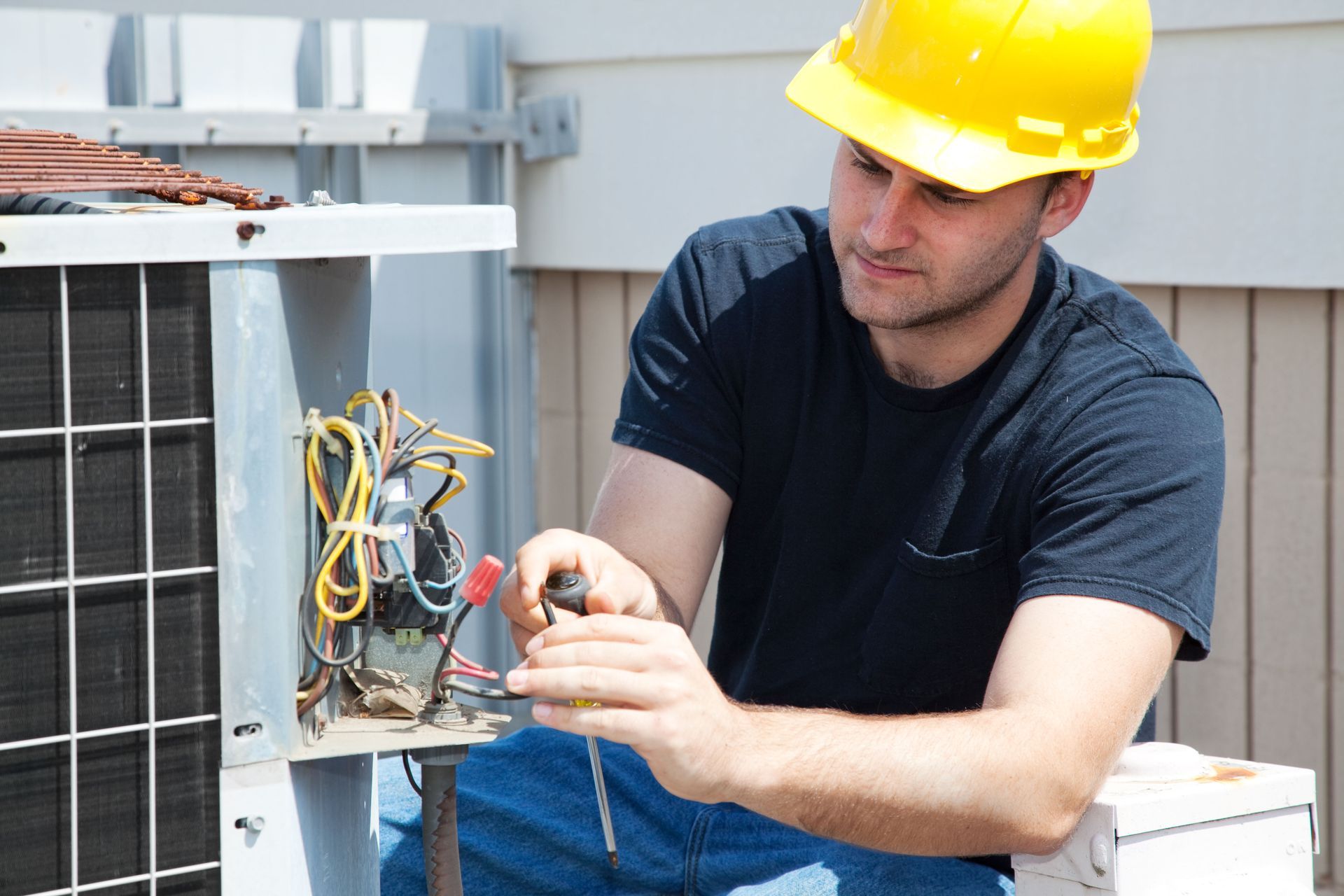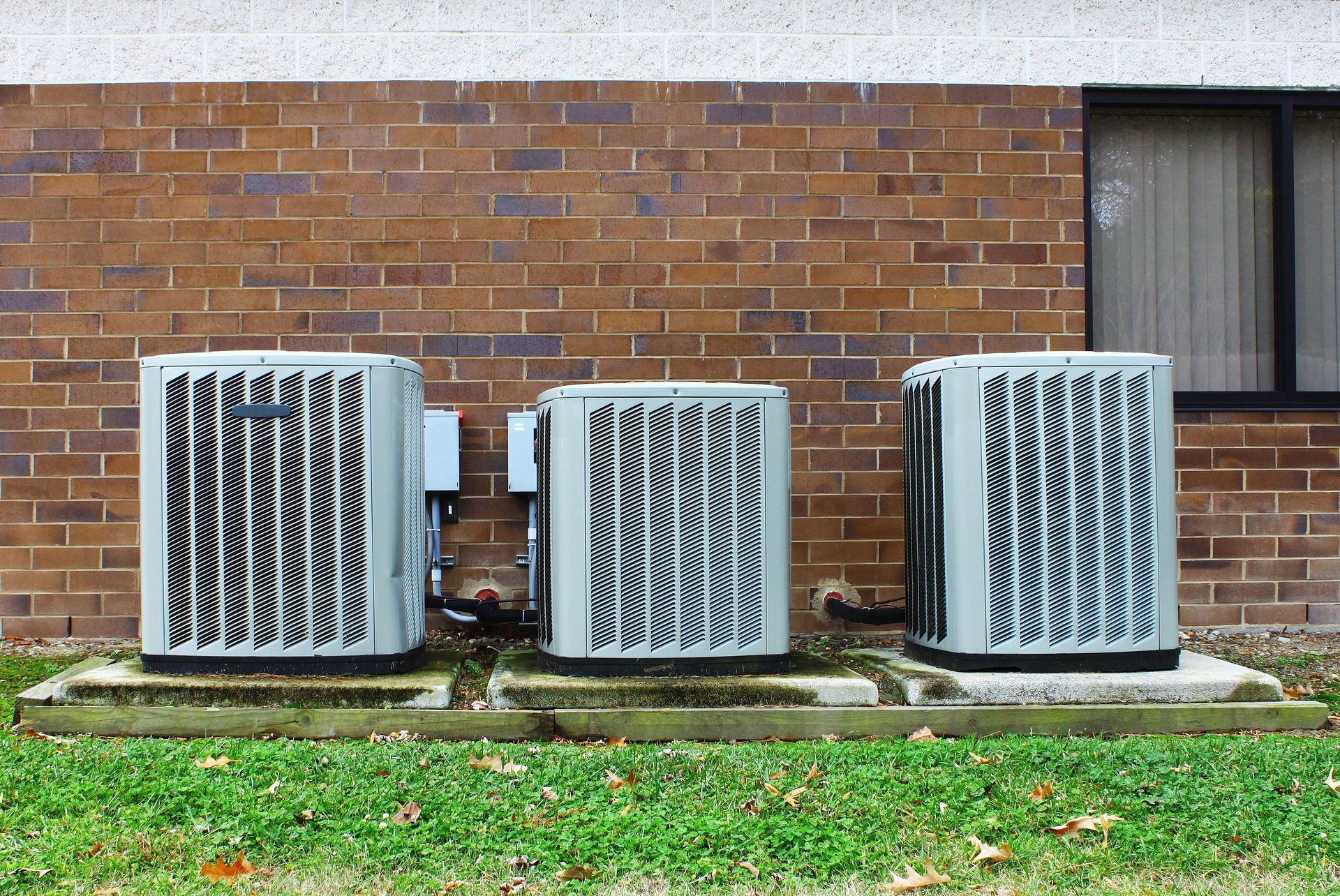6 HVAC Maintenance Tips Every Homeowner Should Know
Regular HVAC maintenance keeps your home comfortable, efficient, and cost-effective. Proper upkeep not only extends the life of your system but also prevents expensive repairs and improves air quality. By following essential maintenance practices, homeowners can enjoy reliable performance and lower energy bills year-round.
1. Understanding Your HVAC System
1.1 Key Components
An HVAC system includes a furnace for heating, an air conditioner for cooling, ductwork for air distribution, and a thermostat to control temperature. According to Global Market Insights, 88% of U.S. households use air conditioning, making it vital to understand how these components work together. Recognizing their roles allows homeowners to spot problems early and make informed HVAC maintenance decisions.
1.2 How It Works
HVAC systems regulate indoor temperatures through heat exchange and airflow. During cooling, refrigerants absorb indoor heat and expel it outside. During heating, furnaces warm air and distribute it through ducts. Proper airflow—maintained by clean filters and unobstructed vents—ensures even temperature distribution and prevents strain on system components. Routine HVAC maintenance helps sustain this balance and prevents avoidable wear.
1.3 Efficiency and Energy Use
System efficiency directly affects comfort and utility costs. A well-maintained HVAC unit runs smoothly, conserving energy and reducing wear. Air conditioners use the SEER (Seasonal Energy Efficiency Ratio) rating to measure efficiency—higher ratings indicate better performance. Routine filter replacements, system inspections, and HVAC maintenance help reduce household energy consumption and environmental impact.
1.4 Common Issues and Basic Troubleshooting
Common HVAC issues include thermostat malfunctions, poor airflow, and refrigerant leaks. Strange noises or inconsistent temperatures often point to clogged filters or failing components. Homeowners can check thermostat settings, replace filters, and clear vents to fix minor issues. However, electrical problems, leaks, or persistent inefficiencies require professional HVAC maintenance to avoid further damage.
2. Regular Inspection and Cleaning
2.1 How Often to Inspect
HVAC systems should be inspected at least twice a year—typically in spring and fall, in our expert opinion. These inspections help catch potential issues before heavy seasonal use. Technicians should check refrigerant levels, belts, ducts, and overall system performance. Scheduling seasonal HVAC maintenance ensures reliability and optimal performance when you need heating or cooling the most.
2.2 Cleaning or Replacing Air Filters
Air filters trap dust and allergens, improving indoor air quality and system efficiency. Clogged filters restrict airflow, forcing systems to work harder and use more energy. Filters should be replaced every one to three months, depending on air quality and household conditions. Homes with pets or allergies may need more frequent HVAC maintenance to maintain consistent airflow.
2.3 Maintaining Outdoor Units
Outdoor HVAC units collect debris such as leaves and grass clippings that can block airflow. Before cleaning, turn off power to the unit. Gently rinse the exterior with a hose and remove any obstructions around it. Maintain at least two to three feet of clearance around the unit to promote airflow and prevent overheating. Incorporating this into your regular HVAC maintenance schedule keeps performance high.
2.4 Checking for Leaks and Rust
Leaks and rust can compromise performance and cause costly damage. Inspect refrigerant lines, condensation drains, and metal components regularly. Rust indicates moisture exposure, while pooling water may signal leaks. Apply protective coatings to metal parts and consult a professional for refrigerant or drainage issues to prevent further deterioration through timely HVAC maintenance.
3. Seasonal Maintenance Tasks
3.1 Preparing for Winter
Before winter, replace air filters, inspect the furnace, and clear outdoor units. Check for worn belts, cracked hoses, and faulty ignitions. Adjust your thermostat settings for consistent heating and schedule professional HVAC maintenance to confirm safe and efficient operation. Seal drafty areas and improve insulation to help your system maintain warmth without overworking.
3.2 Preparing for Summer
Summer maintenance starts with cleaning or replacing filters and clearing debris from outdoor units. Check refrigerant levels and inspect wiring for wear. Keeping the unit shaded and ensuring indoor vents aren’t blocked can improve cooling efficiency. Combining preventive care with professional HVAC maintenance prevents performance issues during peak heat.
3.3 Thermostat Checks
The thermostat regulates comfort and energy use. Verify its accuracy by comparing it with a room thermometer and recalibrate as needed. Replace outdated models with programmable or smart thermostats, which learn usage patterns and adjust temperatures automatically. These upgrades complement regular HVAC maintenance, significantly reducing energy costs while maintaining consistent comfort throughout the year.
3.4 Drain Line Maintenance
Condensate drain lines remove moisture from the cooling process. Clogs can lead to leaks or water damage. To prevent buildup, flush the line with a mixture of vinegar and water every few months. Keep the drain pan clean and dry to discourage mold growth. Addressing minor drainage issues early through HVAC maintenance avoids costly repairs later.
4. Improving Efficiency and Performance
4.1 Sealing Ductwork
Leaky ducts waste energy and cause uneven temperatures. Inspect ducts for gaps, holes, or loose connections and seal them using metal tape or mastic. Professional duct sealing services can further enhance efficiency, improving air circulation and reducing heating and cooling costs when paired with consistent HVAC maintenance.
4.2 Managing Airflow
Proper airflow ensures consistent comfort across all rooms. Keep vents unobstructed by furniture and regularly clean registers to remove dust. Consider balancing airflow by adjusting vent openings in different rooms. Maintaining even airflow distribution supports energy savings and complements HVAC maintenance practices that keep systems efficient.
4.3 Monitoring Energy Usage
Tracking energy consumption reveals how efficiently your HVAC system performs. Smart thermostats and utility monitoring tools help identify unusual spikes in usage, signaling potential problems. By staying alert to these changes, homeowners can address inefficiencies promptly and maintain optimal system performance through ongoing HVAC maintenance.
5. When to Call a Professional
5.1 Signs You Need Professional Help
While homeowners can manage many maintenance tasks, some issues require expert attention. Persistent noises, inconsistent temperatures, or system short-cycling indicate deeper problems. Professionals can diagnose electrical issues, refrigerant leaks, and component failures accurately. Scheduling annual professional HVAC maintenance ensures peak performance and prevents major breakdowns.
5.2 Benefits of Professional Maintenance
Professional HVAC technicians possess tools and knowledge to identify hidden issues and enhance system efficiency. Regular professional service reduces wear, improves safety, and extends equipment lifespan. During HVAC maintenance visits, technicians typically inspect coils, tighten connections, check refrigerant levels, and calibrate thermostats—tasks that guarantee smooth operation throughout the year.
6. Long-Term HVAC Care Strategies
6.1 Creating a Maintenance Schedule
Consistency is key to long-term system performance. Establish a schedule for monthly filter checks, seasonal inspections, and annual professional servicing. Keeping a log of your HVAC maintenance helps track completed tasks and upcoming service dates, preventing oversight and ensuring reliable operation year-round.
6.2 Investing in Smart Technology
Smart thermostats and home automation tools optimize comfort and efficiency by learning your habits and adjusting settings automatically. Remote monitoring allows homeowners to track performance and energy usage in real time. These technologies simplify HVAC maintenance while enhancing convenience and sustainability.
6.3 Enhancing Indoor Air Quality
Clean filters, ducts, and vents contribute to healthier indoor air. Consider adding air purifiers or dehumidifiers to manage humidity and remove airborne pollutants. Regular HVAC maintenance not only safeguards equipment but also promotes a healthier living environment for your family.
6.4 Planning for Future Upgrades
As technology advances, upgrading individual HVAC components—such as thermostats, compressors, or ductless mini-splits—can improve efficiency without full replacement. Planning incremental upgrades as part of ongoing HVAC maintenance helps manage costs while maintaining modern, energy-saving performance.
HVAC maintenance is a year-round commitment that pays dividends in comfort, efficiency, and savings. By staying proactive with inspections, cleanings, and timely repairs, homeowners can avoid costly breakdowns and extend their system’s life. Regular maintenance also supports a healthier indoor environment and greater energy efficiency. To keep your home comfortable and your system running smoothly, schedule professional HVAC service at least twice a year and stay diligent with routine care. Reach out to Rand Aire Mechanical Contractors Inc today.





Share On: